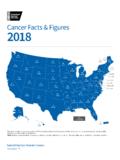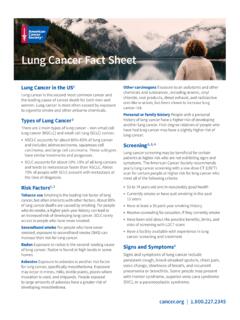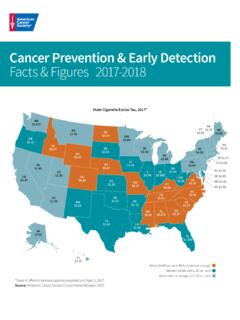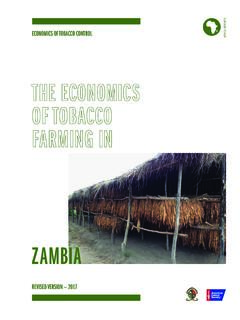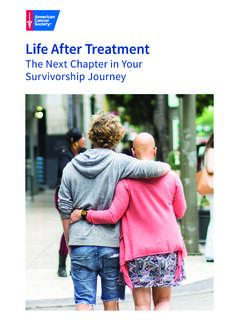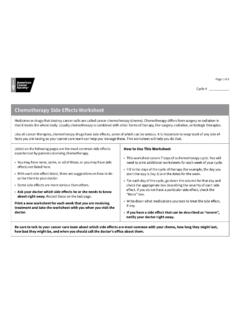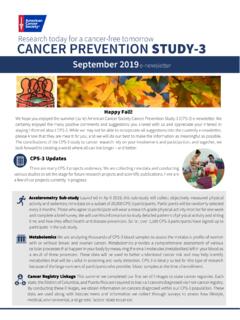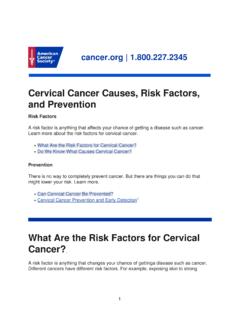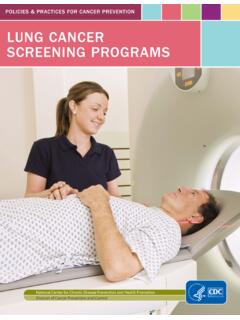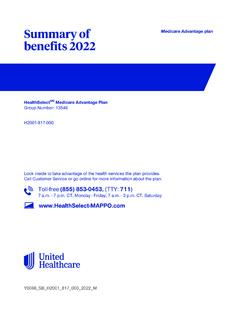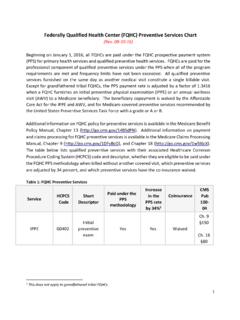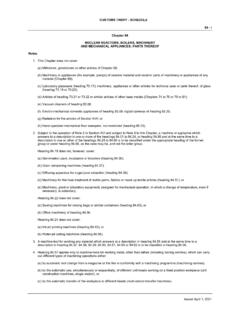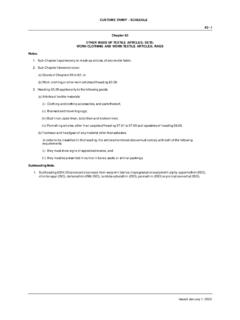Transcription of Lung Cancer Early Detection, Diagnosis, and Staging
1 Lung Cancer Early detection , Diagnosis, and Staging | and DiagnosisCatching Cancer Early often allows for a higher likelihood of successful treatment. Someearly cancers may have signs and symptoms that can be noticed, but that is not alwaysthe Lung Cancer Be Found Early ?lLung NoduleslSigns and Symptoms of Lung CancerlTests for Lung CancerlUnderstanding Your Pathology ReportlStages and Outlook (Prognosis)After a Cancer diagnosis , Staging provides important information about the extent ofcancer in the body and anticipated response to Cell Lung Cancer StageslSmall Cell Lung Cancer StageslLung Cancer Survival RateslQuestions to Ask About Lung CancerHere are some questions you can ask your Cancer care team to help you betterunderstand your Cancer diagnosis and treatment Cancer | to Ask About Lung CancerlCan Lung Cancer Be Found Early ? Screening is the use of tests or exams to find a disease in people who don t havesymptoms. Regular chest x-rays have been studied as a screening test for people at higher risk forlung Cancer , but they haven't been shown to help most people live longer, and thereforethey aren't recommended for lung Cancer recent years, a test known as a low-dose CT ( ldct ) scan has been studied inpeople at higher risk of getting lung Cancer (mainly because they smoke or used tosmoke).
2 ldct scans can help find abnormal areas in the lungs that may be has shown that unlike chest x-rays, yearly ldct scans to screen people athigher risk of lung Cancer can save lives. For these people, getting yearly ldct scansbefore symptoms start helps lower the risk of dying from lung to screen people at higher risk for lung cancerIn the United States, lung Cancer is the second most common Cancer . It s also theleading cause of death from lung Cancer is found at an earlier stage, when it is small and before it has spread, it ismore likely to be treated Cancer screening is recommended for certain people who smoke or used tosmoke, but who don't have any signs or symptoms. If a person has lung Cancer butdoesn't have any symptoms, this usually means there's a chance to detect the symptoms of lung Cancer don't appear until the disease is already at anadvanced stage. Even when lung Cancer does cause symptoms, many people maymistake them for other problems, such as an infection or long-term effects fromsmoking.
3 This may delay the diagnosis . If you have symptoms that could be fromlung Cancer , see your doctor right away. (People who already have symptoms that2 American Cancer | be from lung Cancer may need tests such as CT scans to find the cause, which insome cases may be Cancer . But this kind of testing is for diagnosis and is not the sameas screening.)American Cancer Society lung Cancer screening guidelineThe most recent version of the American Cancer Society (ACS) lung cancerscreening guideline (from 2018) is being taken down while we review newscientific evidence to be included in the next update. While this important updateis being completed, the ACS advises that health care providers, and people atincreased risk for lung Cancer , follow the recently updated recommendations forannual lung Cancer screening from the US Preventive Services Task Force(USPSTF), the American Academy of Family Physicians (AAFP), or the AmericanCollege of Chest Physicians. These organizations recommend yearly lung cancerscreening with ldct scans for people who:Are 50 to 80 years old and in fairly good health, andlCurrently smoke or have quit in the past 15 years, andlHave at least a 20 pack-year smoking history.
4 (This is the number of packs ofcigarettes per day multiplied by the number of years smoked. For example,someone who smoked 2 packs a day for 10 years [2 x 10 = 20] has 20 pack-yearsof smoking, as does a person who smoked 1 pack a day for 20 years [1 x 20 = 20].)lIn addition, it's important that people who are going to be screened:Receive counseling to quit smoking if they currently smoke, andlHave been told by their doctor about the possible benefits, limits, and harms ofscreening with ldct scans, andlCan go to a center that has experience in lung Cancer screening and COVID-19 pandemic has resulted in many elective procedures being put onhold, and this has led to a substantial decline in Cancer screening. Health carefacilities are providing Cancer screening during the pandemic with many safetyprecautions in place. Learn how you can talk to your doctor and what steps youcan take to plan, schedule, and get your regular Cancer screenings in CancerScreening During the COVID-19 and possible risks of lung Cancer screening3 American Cancer | main benefit of screening is a lower chance of dying from lung Cancer , whichaccounts for many deaths in people who currently smoke or formerly , it s important to be aware that, as with any type of screening, not everyone whogets screened will benefit.
5 Screening with ldct will not find all lung cancers, not all ofthe cancers that are found will be found Early , and some people with lung Cancer foundby screening will still die from that scans can also find things that turn out not to be Cancer , but that still have to bechecked out with more tests to know what they are. You might need more CT scans, orless often, invasive tests such as a lung biopsy, in which a piece of lung tissue isremoved with a needle or during surgery. These tests might rarely lead to also expose people to a small amount of radiation with each test. It is less thanthe dose from a standard CT, but it is more than the dose from a chest x-ray. Somepeople who are screened may end up needing further CT scans, which means moreradiation things to consider if you're thinking about screeningIf you are at higher risk for lung Cancer , your doctor can explain your risk and how lungcancer screening might apply to you. Your doctor can also talk with you about whathappens during screening and the best places to get the yearly screening test.
6 Lungcancer screening is covered by Medicare and by many private health insurance health care team can help you find out if your insurance will provide should only be done at facilities that have the right type of CT scanner andthat have experience in ldct scans for lung Cancer screening. The facility should alsohave a team of specialists that can give patients the appropriate care and follow-up ifthere are abnormal results on the scans. You might not have the right kind of facilitynearby, so you may need to travel some distance to be you smoke, you should get counseling about stopping. You should be told about yourrisk of lung Cancer and referred to a smoking cessation program. Screening is not agood alternative to stopping smoking. By quitting, people who smoke can lowertheir risk of getting and dying from lung Cancer . For help quitting, see How To QuitSmoking and Smokeless Tobacco2 or call the American Cancer Society at does in fairly good health mean?4 American Cancer | is meant to find Cancer in people who do not have symptoms of the get the most benefit from screening, people need to be in fairly good health.
7 Forexample, they need to be able to have surgery and other treatments to try to cure lungcancer if it is found. People who have other major health issues that could keep themfrom having lung surgery might not be good candidates for lung Cancer screening. Thesame is true for people who might have a shortened life expectancy because theyalready have other serious medical conditions. These people might not benefit enoughfrom screening for it to be worth the 's important to talk to your doctor about all your health issues when deciding if lungcancer screening is right for something abnormal is found during screeningSometimes screening tests will show something abnormal in the lungs or nearby areasthat might be Cancer . Most of these abnormal findings will turn out not to be Cancer , butmore CT scans or other tests will be needed to be sure. Some of these tests aredescribed in Tests for Lung scans of the lungs can also sometimes show problems in other organs near thelungs.
8 Your doctor will discuss any such findings with you if they are DR, Adams AM, Berg CD, et al; National Lung Screening Trial Research lung- Cancer mortality with low-dose computed tomographic screening. N EnglJ Med. 2011;365(5) Academy of Family Physicians (AAFP). Lung Cancer Screening, at on August 27, Cancer | Koning HJ, van der Aalst CM, de Jong PA, et al. Reduced lung- Cancer mortality withvolume CT screening in a randomized trial. N Engl J Med. 2020;382(6) PJ, Silvestri GA, Patel S, et al. Screening for lung Cancer : CHEST guidelineand expert panel report. Chest. 2018,153(4) Cancer Institute. Physician Data Query (PDQ). Patient Version. Lung CancerScreening. 2019. Accessed at on August 27, RA, Andrews KS, Brooks D, et al. Cancer screening in the United States, 2018: Areview of current American Cancer Society guidelines and current issues in cancerscreening. CA Cancer J Clin. 2018 Jul;68(4) Preventive Services Task Force (USPSTF). Lung Cancer : Screening.
9 Accessedat on August 27, R, Fontham E, Barrera E, et al. American Cancer Society lung cancerscreening guidelines. CA Cancer J Clin. 2013;63:106 Revised: August 27, 2021 Lung Nodules A lung nodule (or mass) is a small abnormal area that is sometimes found during a CTscan of the chest. These scans are done for many reasons, such as part of lung cancerscreening, or to check the lungs if you have lung nodules seen on CT scans are not Cancer . They are more often the result ofold infections, scar tissue, or other causes. But tests are often needed to be sure anodule is not you have a lung noduleMost often the next step is to get a repeat CT scan to see if the nodule is growing overtime. The time between scans might range anywhere from a few months to a year,6 American Cancer | on how likely your doctor thinks that the nodule could be Cancer . This isbased on the size, shape, and location of the nodule, as well as whether it appears tobe solid or filled with fluid.
10 If a repeat scan shows that the nodule has grown, yourdoctor might also want to get another type of imaging test called a positron emissiontomography (PET) scan, which can often help tell if it is later scans show that the nodule has grown, or if the nodule has other concerningfeatures, your doctor will want to get a sample of it to check it for Cancer cells. This iscalled a biopsy. This can be done in different ways:The doctor might pass a long, thin tube (called a bronchoscope1) down your throatand into the airways of your lung to reach the nodule. A small tweezer on the end ofthe bronchoscope can be used to get a sample of the the nodule is in the outer part of the lung, the doctor might pass a thin, hollowneedle through the skin of the chest wall (with the guidance of a CT scan) and intothe nodule to get a there is a higher chance that the nodule is Cancer (or if the nodule can t bereached with a needle or bronchoscope), surgery might be done to remove thenodule and some surrounding lung tissue.
